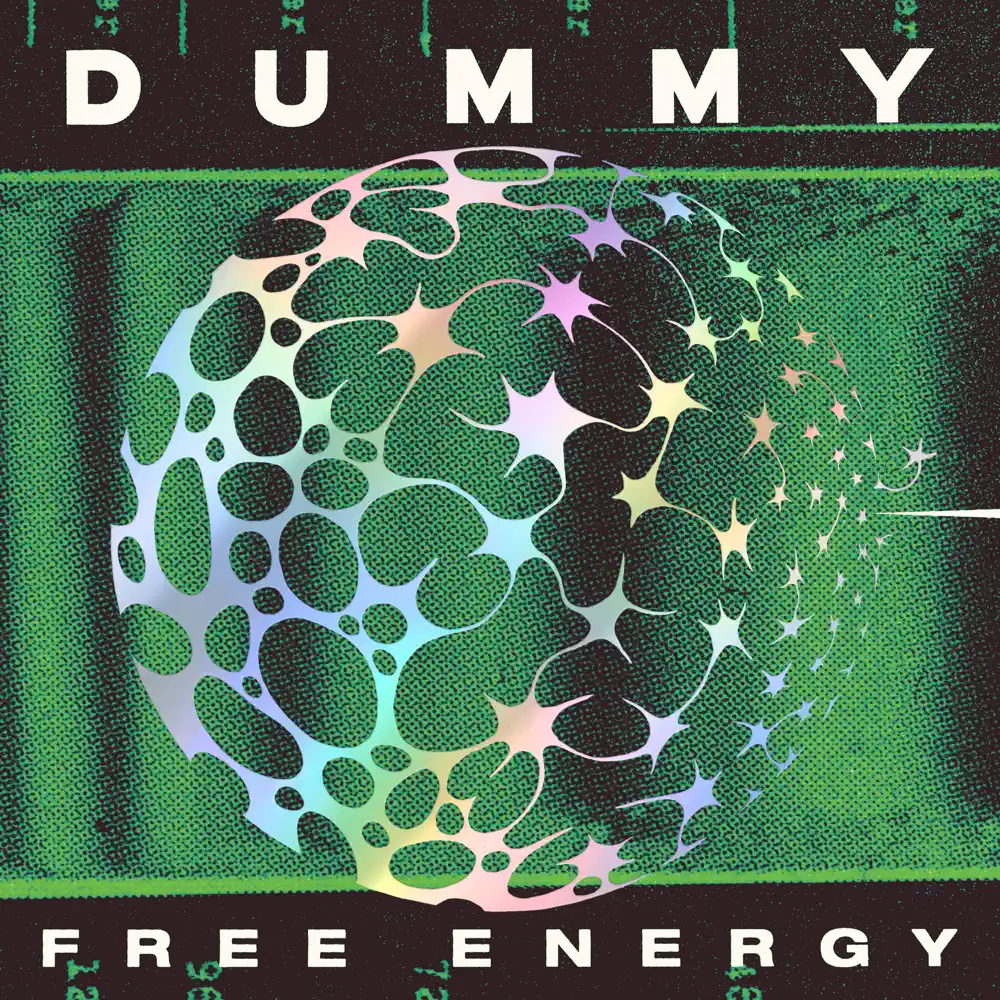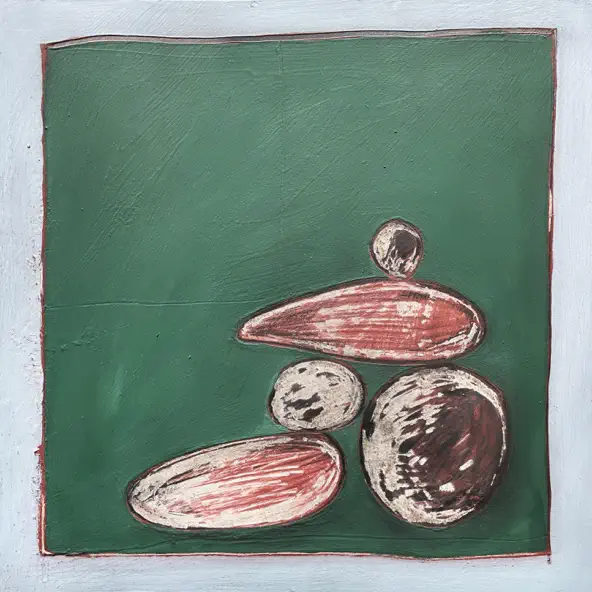
At my advanced age of 28, I’m okay letting indie smash hits pass me by (“you have fun, kids”). This album is my first time in a while having a big album really land with me like they used to in the faraway lands of my teens. Maybe I shouldn’t be so surprised, since I also got a lot out of Magdalena Bay’s previous album Mercurial World (landing at #4 in my 2021 AOTY post no less). I can see fans still preferring that album for its stylistic focus on synthpop, but Imaginal Disk injects their formula with a new variety and concept-album-ambition: climaxes! Drama! Everything feels big here, even Mica Tenenbaum’s hushed vocals even make new leaps here in tandem with the music’s new adventurousness. (Is it me or is “Vampire in the Corner” an overt attempt beat St. Vincent at her own game? They succeed.) But ultimately, the repeat impression from each relisten: I just love all these songs.

This album is an advertisement for keeping tabs on the Music from Memory label. This debut album ticks so many boxes for me: nocturnal 80s art rock silkiness (the fretless bass…), Hassell/Eno style “fourth world”, old video game soundtracks. I’m going to cash in on a music writing cliché early in this guide and drop a “transportive” on this one—this is incredibly vivid music, instant evocation of a middle-of-the-night sci-fi dimension.

Shoegaze has captured the DIY indie world in recent years, what is Dummy bringing to the table? I can list exactly what it is: fun breakbeats and drums throughout (is that some trip hop I hear?), male/female vocalist dueting (always a win), cathartic play-it-loud climaxes, and addictive dream pop melodies. (And, also, Elden Ring-referencing song titles…)

This is the latest addition to my 2024 shortlist, and it was made without difficulty. A natural mix of sophisti-pop, 90s downtempo, dream pop… maybe even some 2010-era chillwave? In its moments, it’s strikingly pretty, like the sighing, echoing synth riff in “Red Cloud” and the too-short meditative “Pink Shoes” intermissions. (“Too short” is also probably the best description of this album as a whole.)

I can’t claim much invention happening here, this could’ve dropped on Chain Reaction 25 years ago. Grimy ambient dub textures set to microhouse beats—and yet, so compulsively relistenable, even in a year full of great electronic music to choose from.

This is one of the best active projects recapturing the mellow, jazz-inflected qualities of 80s sophisti-pop (even if Andy Cush’s Bandcamp description adds “uneasily” to this association, nice try). Even in a giant, collaborator-stuffed album filled with ruminations over relationships and failures in communication, Winston Cook-Wilson’s vocals (in the company of Nicholas Krgovich or China Crisis’ Gary Daly) are both easygoing and plainspokenly direct in a contradictory way to make the album go down smooth but also constantly lock you into the lyrics. If Cook-Wilson really wanted to recreate the full-CD-length 90s era to follow the initial inspiration for this album, he needed to make some of these songs bad.

This is a live album from two 2022 festival performances, placing its recording in the middle of Wilkes’ albums One Theme & Subsequent Improvisation, Perform the Compositions of Sam Wilkes & Jacob Mann, and DRIVING. And, unsurprisingly, it’s every bit as good as those albums. The quintet apparently was a result of miscommunications when booking which two people to join Wilkes as a trio for a festival. Both sets of names were booked, and the unexpected quintet only had five hours of rehearsal to figure out their sound together. It’s hard to believe, frankly, but this music (atmospheric, romantic, melodic, playful) could only be a result of a rare synergy. Fate has brought them together, so now I humbly request an onslaught of more albums and tours from them.

After this album blew up, I admit I was surprised just how classic it sounded. It won’t be mistaken as an unearthed late-60s/early-70s time capsule, but it feels like a modern lo-fi album giving the time period a hug. (I was first reminded of a favorite of mine, Cut Worms, for the particular brand of longing nostalgia captured in both artists’ music, but I think Cut Worms has a more overtly throwback sound while Cindy Lee has more of a foot in the modern lo-fi indie world, best heard in the distinctly bedroom crud, occasional electronics, and the pitch-shifted genderfluidity.) The song “Kingdom Come” is nearly a cover of Allen Toussaint’s “Southern Nights”, a holy song to me, and I’ll be damned, it effects me almost as much listening to it.
Regarding the length: I don’t know if this is the artist’s actual intent, but to me, disc one sounds like “the album” and disc two sounds like “bonus” (the disc separation has to mean something when this was released as a free zip file.) I’d recommend giving the first disc a spin, and see if you don’t end up minding spending another hour in its sound.

I love seeing an artist put all of her weight and passion into an ambitious project and it paying off completely. O’Donovan (already one of my favorite current artists in folk, and one of my favorite singing voices period) set out to write a concept album about the passage of women’s suffrage in America. Full shebang: songs adapting suffragist’s speeches, songs written from the perspective of presidents and politicians, and lavish string, woodwind and choir backing (all the muted brass brings Joanna Newsom — Have One on Me to mind, though I already know O’Donovan’s a fan.) And yet, these songs are immediate, working just as well stripped down with the three-piece Hawktail backing her. (I caught her with Hawktail at Phoenix’s Musical Instrument Museum, and can confirm she sounds that good live.) I’m glad to have such an easy album to recommend to anyone to get into her work.

Black Midi came on the scene a few years too late to sync with my prog phase when I know I would’ve obsessed with them. As such, they ended up more of a “respect more than like” situation for me, impressed with each album but not casually throwing them on again. Greep’s solo outing, however, has met me where I’m at. These songs are direct, and the sleazy Latin lounge lizard vibe is genius (is this the baton passed from fellow former prog-skirters The Mars Volta on Que Dios Te Maldiga Mi Corazon?). This really isn’t any less overbearing than Black Midi, it just chooses the medium of lyrics be overbearing in instead. Randy Newman got me hooked on short story songs and first-person portraits of schlubs for the artistic sake of it, opening a craving that the unending expanse of love songs cannot sate. And then, the clouds open and heaven bestows this album with its cadre of diabolical, pathetic, craven people. Scrumptious. (I might even need to put those Black Midi albums on again.)



















































